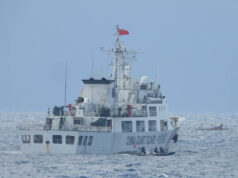Piñol blames economic team for collapse in palay prices
OUTGOING Agriculture Secretary Emmanuel F. Piñol’s closing message upon leaving office was to blame economic managers for the collapse in domestic rice prices, due to competition from cheap foreign imports and “hoarding” of the staple grain by price manipulators.
In a social media post, Mr. Piñol suggested that the government economic team was out of touch for implementing the Rice Tariffication Law, which allowed private traders to import Southeast Asian rice more freely, in exchange for the payment of a 35% tariff on grain sources from Southeast Asia.
He denounced practitioners of economic “theory” which resulted in “flooding the market with imported rice.”
He said policy makers need “to look beyond the graph and get out of their air-conditioned offices to see reality.”
The inflation crisis of 2018 was at least partly due to the drawdown of rice inventories at the National Food Authority (NFA), which left many poor families who depend on NFA rice little choice but to buy their rice from pricier commercial sources. This resort to unsubsidized commercial grain had an outsized impact on the inflation basket, which in poor countries is heavily-weighted in favor of food.
Inflation peaked at 6.7% last September, its highest level in nine years, prompting the government to enact rice tariffication, which came into force in March. Among other measures, the law removed the NFA’s importing function and left it to procure rice from domestic sources alone.
The NFA’s buying price for palay, the unhusked form in which farmers sell their crop, starts at P17 per kilo, but with various incentives for delivery and drying can rise to as high as P20.70. The Philippine Statistics Authority (PSA) said the average farmgate price of palay was P17.80 in the third week of July.
Private traders have been using the threat of competition from imported rice to negotiate lower buying prices from farmers or even leaving the market for domestically-grown palay altogether to focus on imports.
Mr. Piñol estimated private buying prices for palay to be as low as P12-14 in parts of the country, thereby depriving farmers of much-needed income. He said buying prices in 2018, before the law was implemented, were at about P18.
Mr. Piñol said economic managers failed to account for hoarding, market manipulation, and the cartel of traders who collude in setting buying and selling prices.
Legislators are seeking a review of the Rice Tariffication Law, amid the drop in farmgate prices and allegations of the slow disbursement of the P10-billion-a-year Rice Competitiveness Enhancement Fund (RCEF).
The law calls for the RCEF to be funded by tariffs on imported rice, in order to upgrade the rice industry’s productivity.
The PSA will release second quarter agriculture output data on Aug. 7. — Vincent Mariel P. Galang



